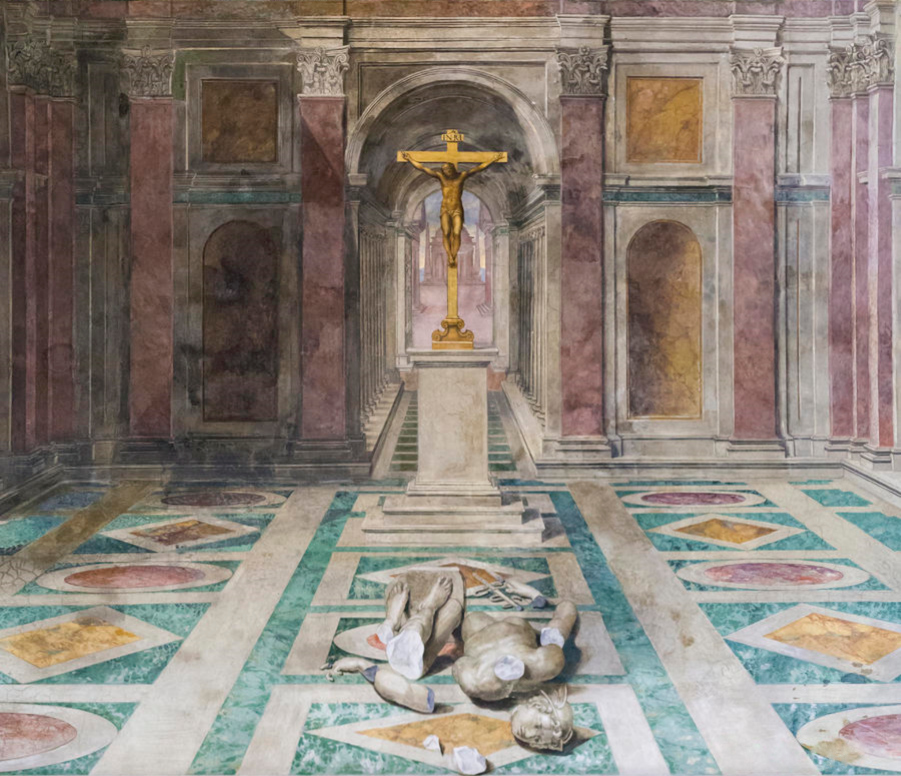This is an old revision of this page, as edited by 203.14.53.105 (talk) at 04:29, 24 November 2003. The present address (URL) is a permanent link to this revision, which may differ significantly from the current revision.
Revision as of 04:29, 24 November 2003 by 203.14.53.105 (talk)(diff) ← Previous revision | Latest revision (diff) | Newer revision → (diff)"Triumph of Christianity" by Tommaso Laureti (1530-1602), ceiling painting in the Sala di Constantino, Vatican Palace. Images like this one symbolize the destruction of ancient pagan culture and the "victory" of Christianity.
during the Roman Empire, and the fact that Christianity, perceived by many Enlightenment intellectuals as a primitive, irrational belief system became the prevailing culture and institutional form during the period, led to the categorization "Dark Ages."
There are no clear starting or ending points for the Dark Ages, though the half-millennium period from the Vandal sack of Rome (455CE) to the year 1000CE is commonly used, although European politics were substantially stabilized with the crowning of Charlemange as Holy Roman Emperor in 800CE.
The negative connotations of the expression Dark Ages have made it unpopular among recent historians of this period. The term Early Medieval is often preferred. The continuities between Dark Age society and late imperial Rome have been stressed by some writers, who wish to emphasise that medieval culture was already developing in the empire, and indeed continued to do so in the unconquered eastern (Byzantine) portion of the empire. However, many of the tribes who took over imperial land were initially pagan. The development of a solidly Christian Europe, in opposition to an Islamic empire based in North Africa and the Middle East, marks a major cultural and political first from the Persian Empire and later the Islamic takeover of the southern and eastern Mediterranean.
The image of constant barbarian warfare amid the ruins of the Roman empire continues to depict popular conceptions of the Dark Ages, influencing the creation of characters such as Conan the Barbarian. The literature of King Arthur also emerges from this confused period, as civilised urban and Christian Roman cultures attempted to defend themselves against expanding pagan tribes. The struggle between Christian and magical-pagan belief systems in the Arthurian romances epitomises this.
In cosmology's Big Bang theory, the term dark ages radiation]] resulting from the "Big Bang" explosion.
